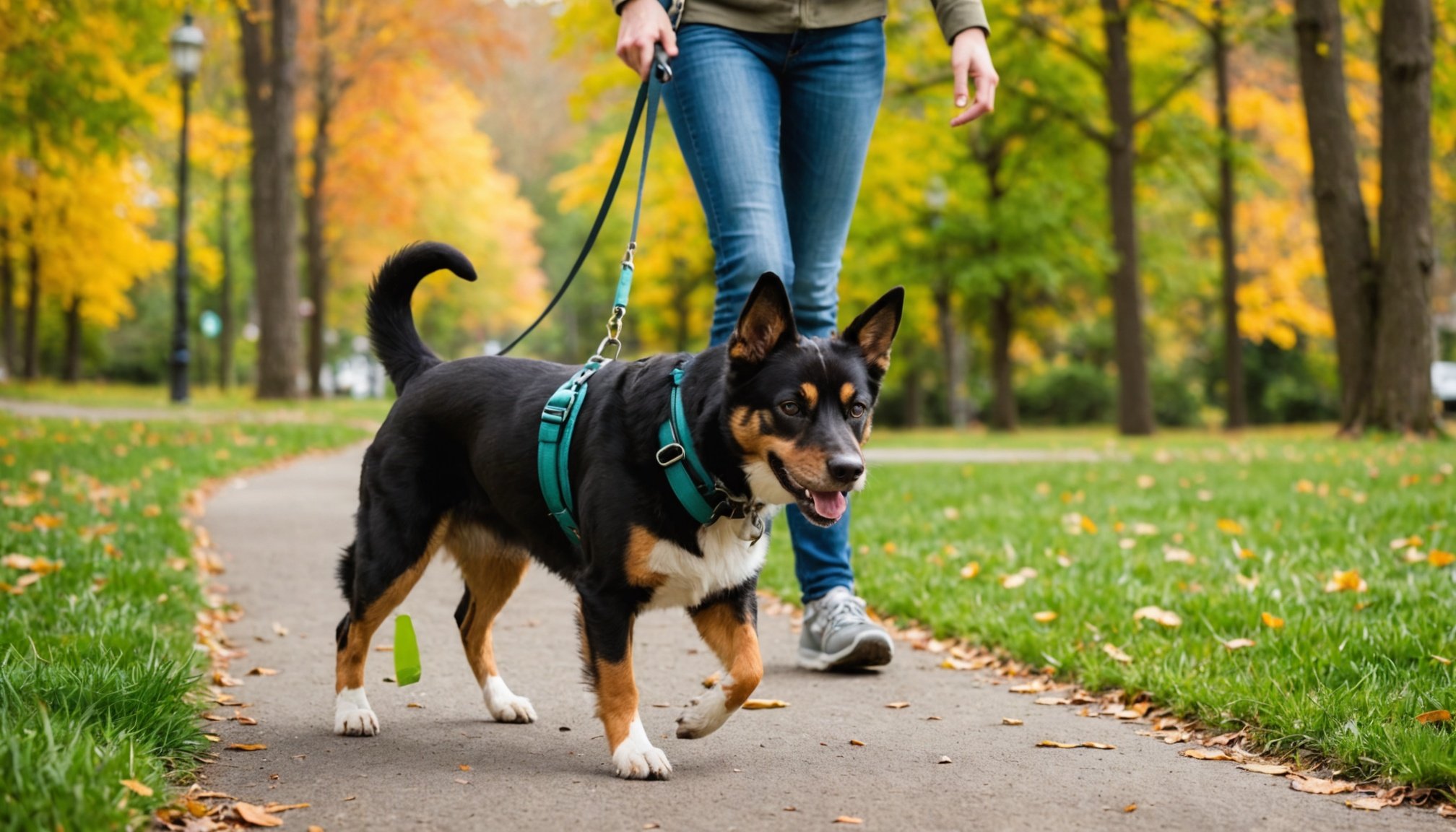Understanding Loose Leash Walking
Loose leash walking is a fundamental aspect of dog training basics, providing significant benefits of leash training for both dogs and owners. At its core, this technique teaches dogs to walk by their handler’s side without pulling or creating tension on the leash. It’s essential for fostering a harmonious walking experience.
Walking with a loose leash not only ensures physical control but encourages dogs to remain attentive and engaged, reducing erratic behaviour. This improves the overall quality of walks. Owners experience enhanced enjoyment when their furry companions display calmness and restraint. Regular leash training sessions promote positive behaviour.
Topic to read : Essential supplements for enhancing joint health in senior dogs: your ultimate guide
One of the crucial training basics is understanding the impact on dog behavior. Consistent practice aids in instilling discipline which extends beyond walks to other aspects of daily life, promoting a more balanced temperament.
The journey to effective loose leash walking involves recognising the needs of both parties. Building a foundation in dog training basics enhances the human-canine relationship, paving the way for an enriched life together.
Also to see : Spotting signs of canine overexertion: essential cues to observe in training sessions
Essential Training Techniques
Mastering training techniques is pivotal to encouraging dog obedience training effectively.
Preparation for Training
Having the right tools can make all the difference. Essential equipment includes a comfortable harness, a sturdy, non-retractable leash, and a pouch for treats. The choice of environment is also crucial; quiet, familiar spaces are ideal for initial sessions, minimising distractions. Equally important is the consistency in training sessions. Establishing a routine helps reinforce good habits and simplifies the learning process for both dog and owner.
Step-by-Step Training Method
Positive reinforcement strategies stand at the core of successful training. Rewarding desired behaviours promptly enhances the learning experience. Begin with short walks and gradually increase duration. Timing is key – delivering rewards immediately strengthens the association. Cue commands must be clear and consistent. Use words like “heel” or “easy” in a steady tone to indicate desired actions. This consistency helps the dog understand expectations.
Incorporating Games and Play
Incorporate playful methods to maintain your dog’s enthusiasm. Engaging games, like follow-the-leader or stop-and-go, effectively reinforce loose leash walking techniques. Fun activities not only sustain motivation but also deepen the bond between owner and pet, making training a more enjoyable experience for both parties.
Addressing Common Challenges
Overcoming common issues such as leash pulling is crucial for successful dog behavior training. Recognising when a dog might pull is the first step in addressing this behaviour. Dogs often react to triggers like other animals or sudden noises. Owners should monitor their dog’s reactions during walks. By doing so, you can identify specific distractions and tailor your responses effectively.
Identifying Cues for Pulling
Understanding dog behavior problems begins with identifying the signs that precede pulling. Look for indicators like increased excitement or tension before a pull occurs. Once these signs are recognised, you can implement prevention strategies.
Solutions for Leash Pulling
To address leash pulling solutions, employ a systematic approach. Start by stopping immediately when pulling occurs and wait for the dog to calm. Continue only when the leash shows slack. Patience is vital here; practice regularly and adapt techniques based on your dog’s breed and temperament.
When to Seek Professional Help
If self-training doesn’t yield results, it may be time to seek professional assistance. Signs that this step is necessary include persistent pulling despite consistent efforts. Professional trainers offer tailored guidance and expertise, further refining your dog’s leash manners. Always ensure you choose a reputable and experienced trainer for best results.
Success Stories and Testimonials
The journey of loose leash walking often culminates in inspiring tales of transformation, highlighted through compelling success stories. Many dog owners discover the training effectiveness by sharing their dog training experiences, illustrating how their pets have blossomed into disciplined companions. These real-life instances resonate with readers, enabling others to visualise potential outcomes.
Consider Sarah, an owner of a once-spirited German Shepherd. Her consistent adherence to dog training basics and embrace of positive reinforcement methods unlocked new levels of obedience in her pet. Her story underscores how persistence and the right techniques can overcome common issues.
Another exemplary testimony comes from Tom, who managed to eliminate his dog’s habit of pulling. Implementing regular stops and rewarding calm behaviour, Tom observed substantial progress within weeks. His journey is a beacon for those contemplating professional help, showing that patience frequently yields dividends.
Such testimonials not only attest to the benefits of leash training but also highlight the strengthened bonds formed through shared achievements with one’s pet. These stories give hope, demonstrating that successful training significantly enhances the human-canine relationship.
Multimedia Resources for Enhanced Learning
Exploring training videos, infographics, and other visual aids is a modern approach to enhancing dog training. These resources provide clear demonstrations of techniques, making it easier to grasp complex concepts.
Recommended Video Tutorials
Video tutorials are excellent for visual learning. They allow trainers to see techniques in action, offering step-by-step guidance. Platforms like YouTube host countless tutorials, providing insights from professional dog trainers. To ensure reliability, look for content from certified trainers or reputable training schools.
Infographics for Quick Reference
Visual aids such as infographics simplify training concepts, presenting information at a glance. They come in handy for quick reminders during training sessions. Effective infographics are concise, visually appealing, and focus on core elements like dog training basics and practical tips.
Community Support and Forums
Online forums foster community engagement and knowledge sharing. Joining these platforms connects you with fellow dog owners and professionals who share training experiences. These spaces are invaluable for exchanging practical tips and finding encouragement through shared successes and challenges. Engaging in these communities often leads to richer, more supported training journeys.











